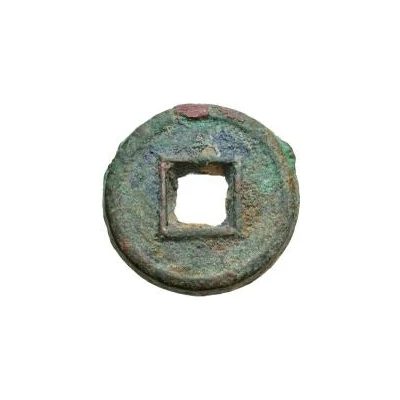1 Cash - Wang Mang Fifth reform; "Biscuit coin"; with mark
| Bronze | 4.32 g | 28 mm |
| Issuer | China (ancient) |
|---|---|
| Emperor | Xin dynasty › Wang Mang (7-23) |
| Type | Standard circulation coin |
| Years | 14-23 |
| Value | 1 Cash |
| Currency | Zhu (fifth reform, 14-40) |
| Composition | Bronze |
| Weight | 4.32 g |
| Diameter | 28 mm |
| Shape | Round with a square hole |
| Technique | Cast |
| Demonetized | Yes |
| Updated | 2024-10-09 |
| Numista | N#209445 |
|---|---|
| Rarity index | 100% |
Reverse
One Chinese ideagram to the left.
Lettering: 二
Translation:
Er
Two
Edge
Plain
Interesting fact
One interesting fact about the Wang Mang "Biscuit Coin" is that it was used as a form of currency during a time of great economic and political change in ancient China. The coin was introduced during the reign of Wang Mang, who served as a regent for the Han Dynasty and later became emperor of the Xin Dynasty. This period saw significant reforms in the monetary system, including the introduction of new coinage and the abolition of the old system of bartering. The "Biscuit Coin" was one of the first coins to be widely used in China and paved the way for the use of coins as a standard form of currency in the region.

